Comparing Passenger Satisfaction, Employees’ Perspective and Performance on Quality and Safety Indicators: A Field Study
Abstract
1. Introduction
2. Materials and Methods
3. Results
3.1. The Passenger and Employee Profiles and Descriptive Statistics on Safety and Quality Indicators
3.2. Results of the Analysis of Passenger Satisfaction: The Ordinal Logistic Regression (OLR) Model
3.3. Results of the Analysis of the Employees’ Perspective
3.4. Results of the Survey with Company Managers
- Airside & Operations Manager
- Sales & Marketing Manager
- Financial Administration Manager
- Safety & Compliance Monitoring Manager
- Health & Safety Environment (HSE) Manager
- Structural Asset Manager.
4. Discussion
Author Contributions
Funding
Institutional Review Board Statement
Informed Consent Statement
Data Availability Statement
Acknowledgments
Conflicts of Interest
Appendix A
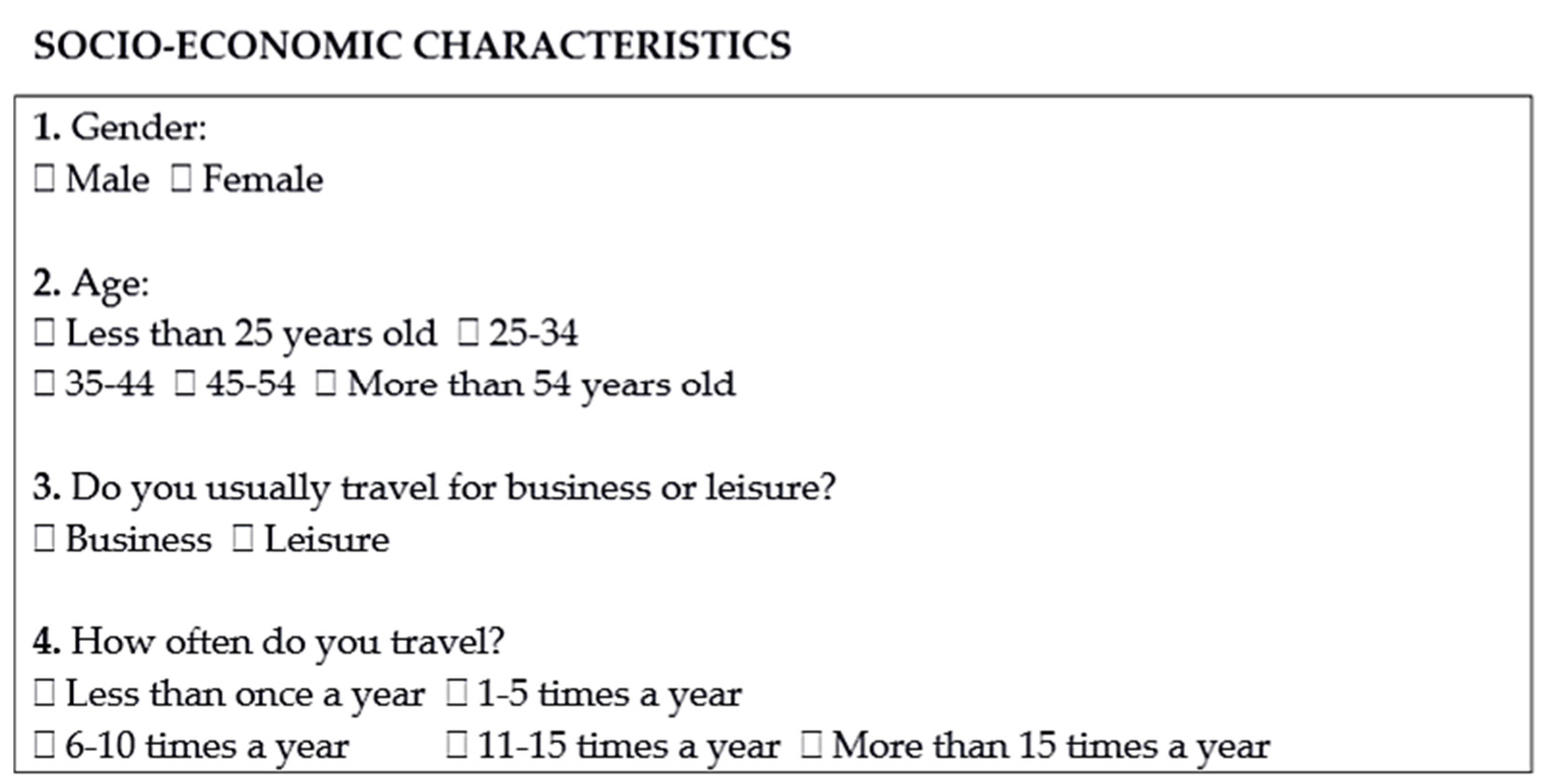
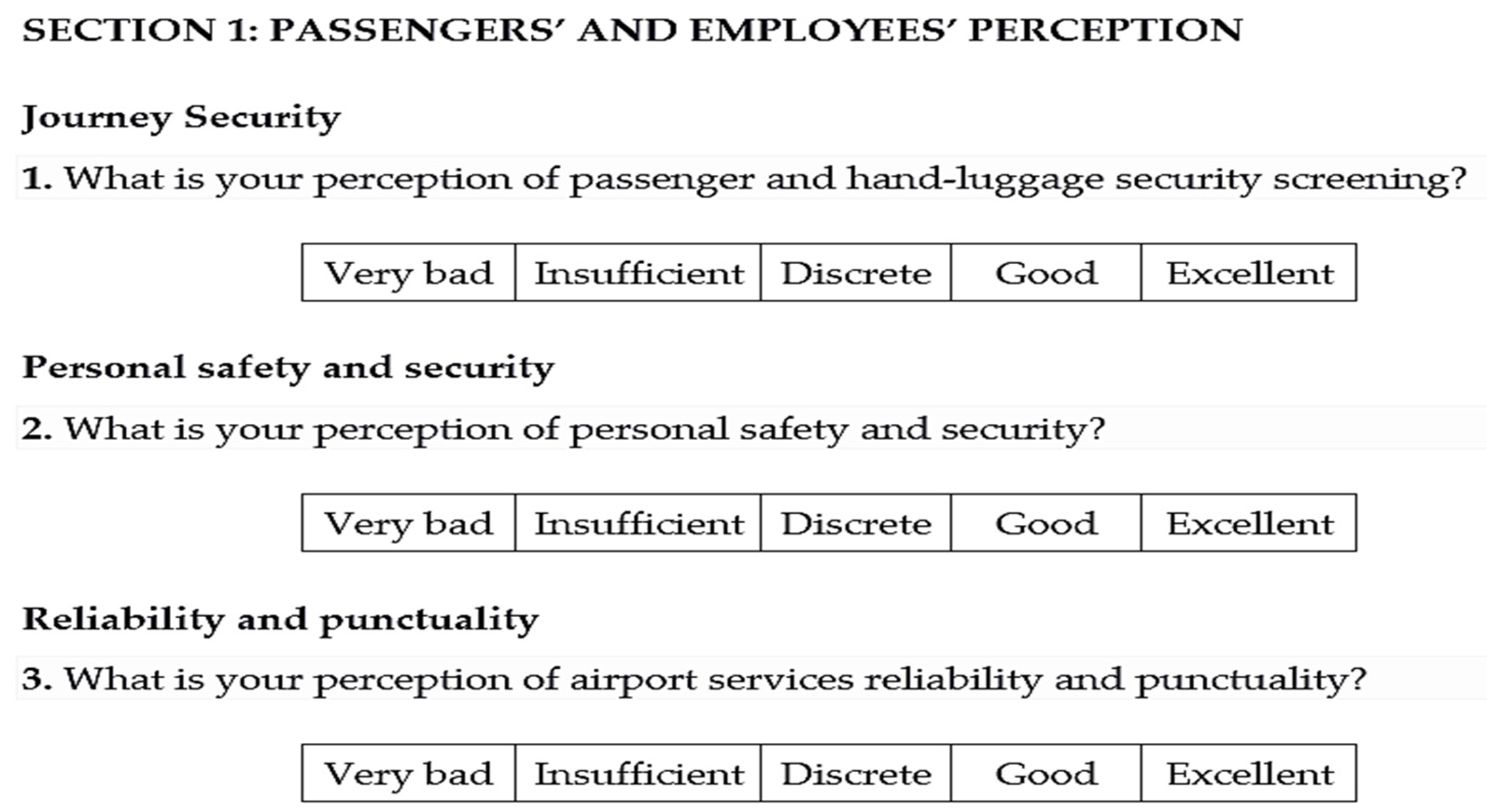
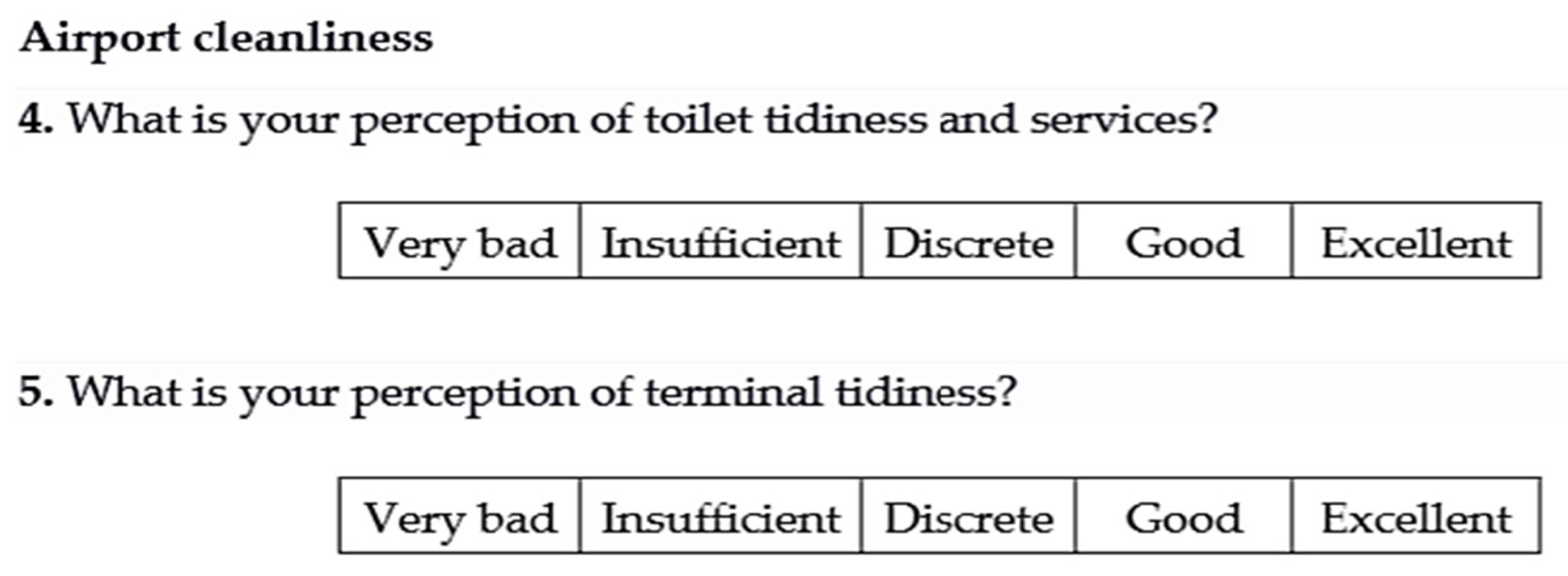
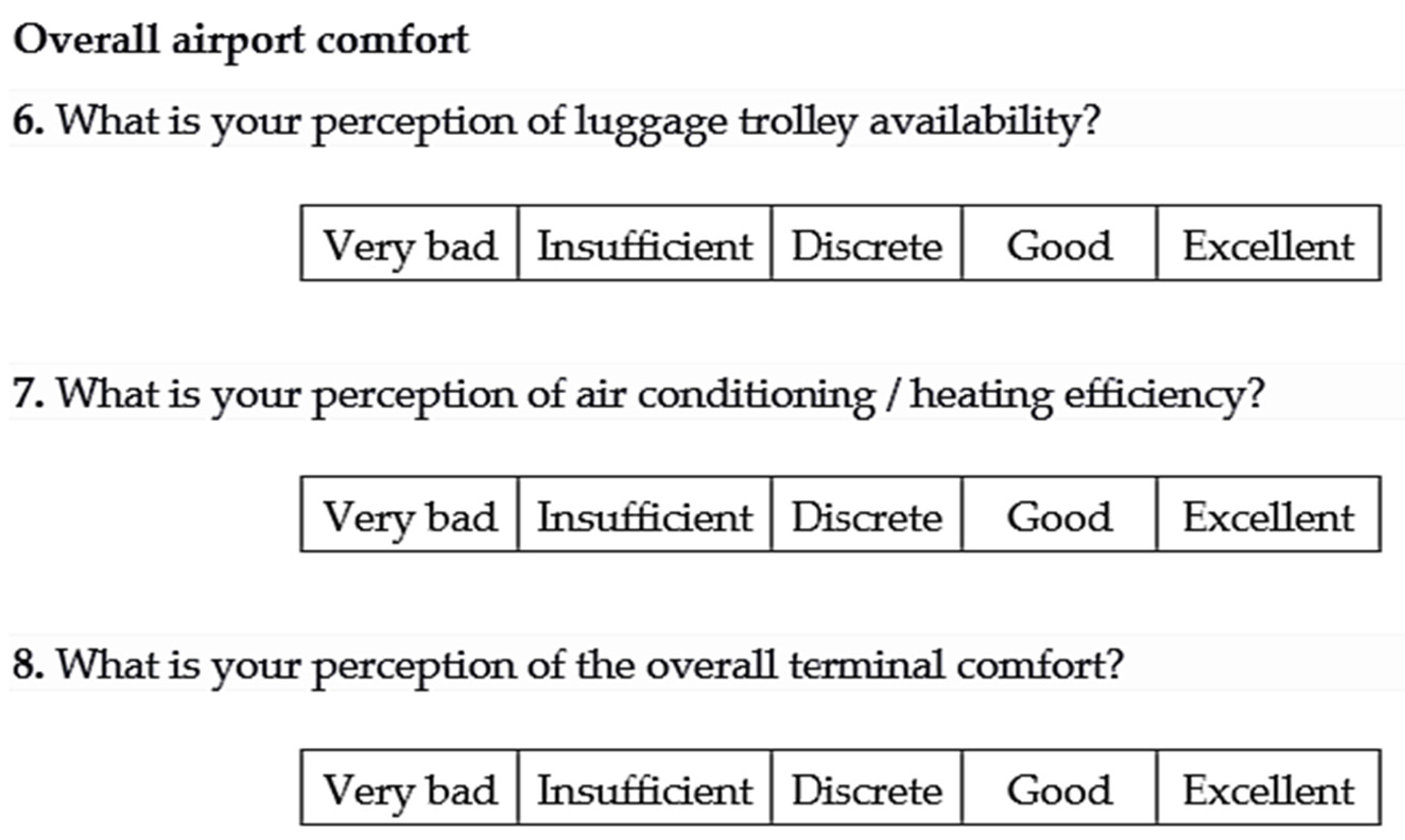

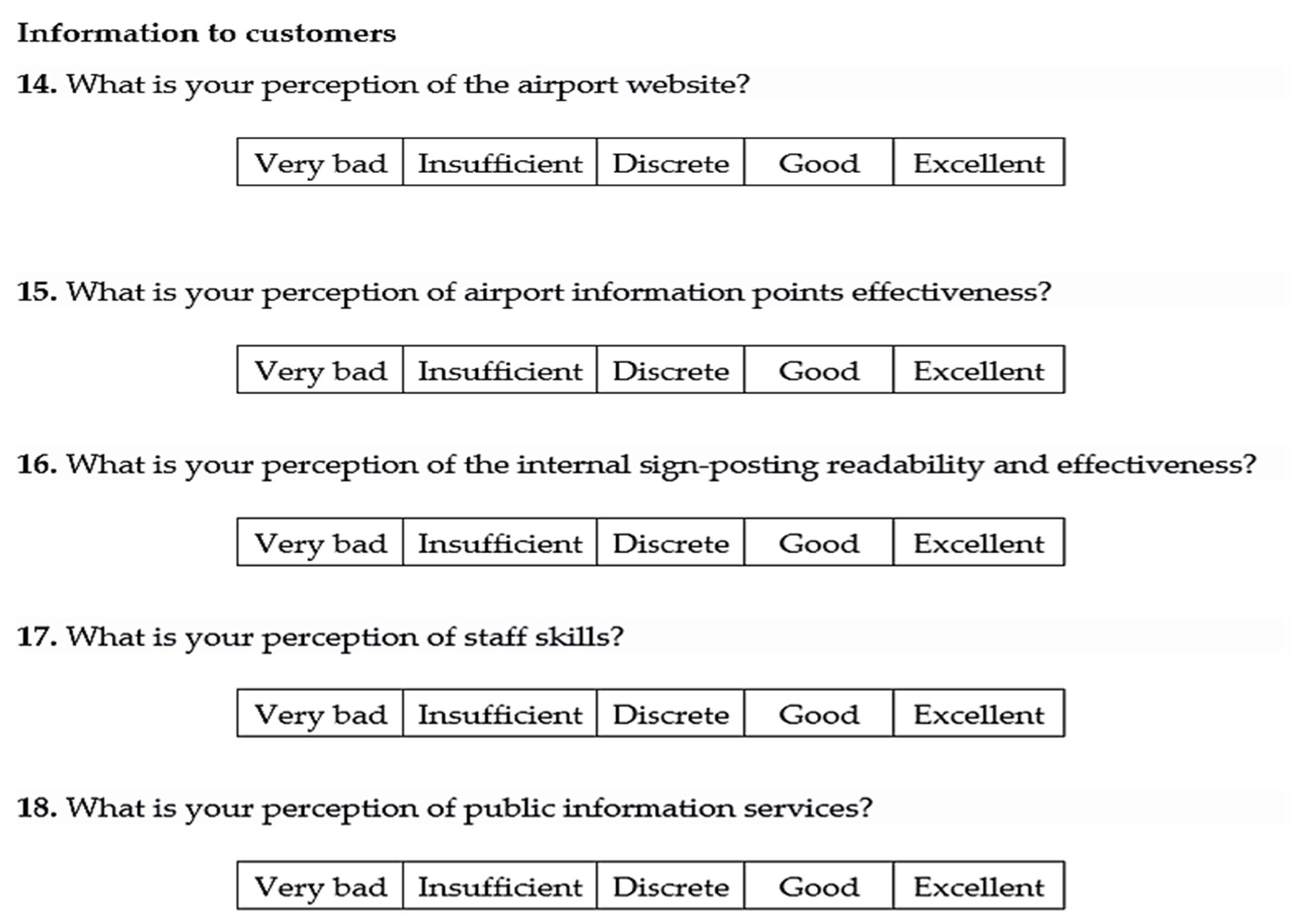
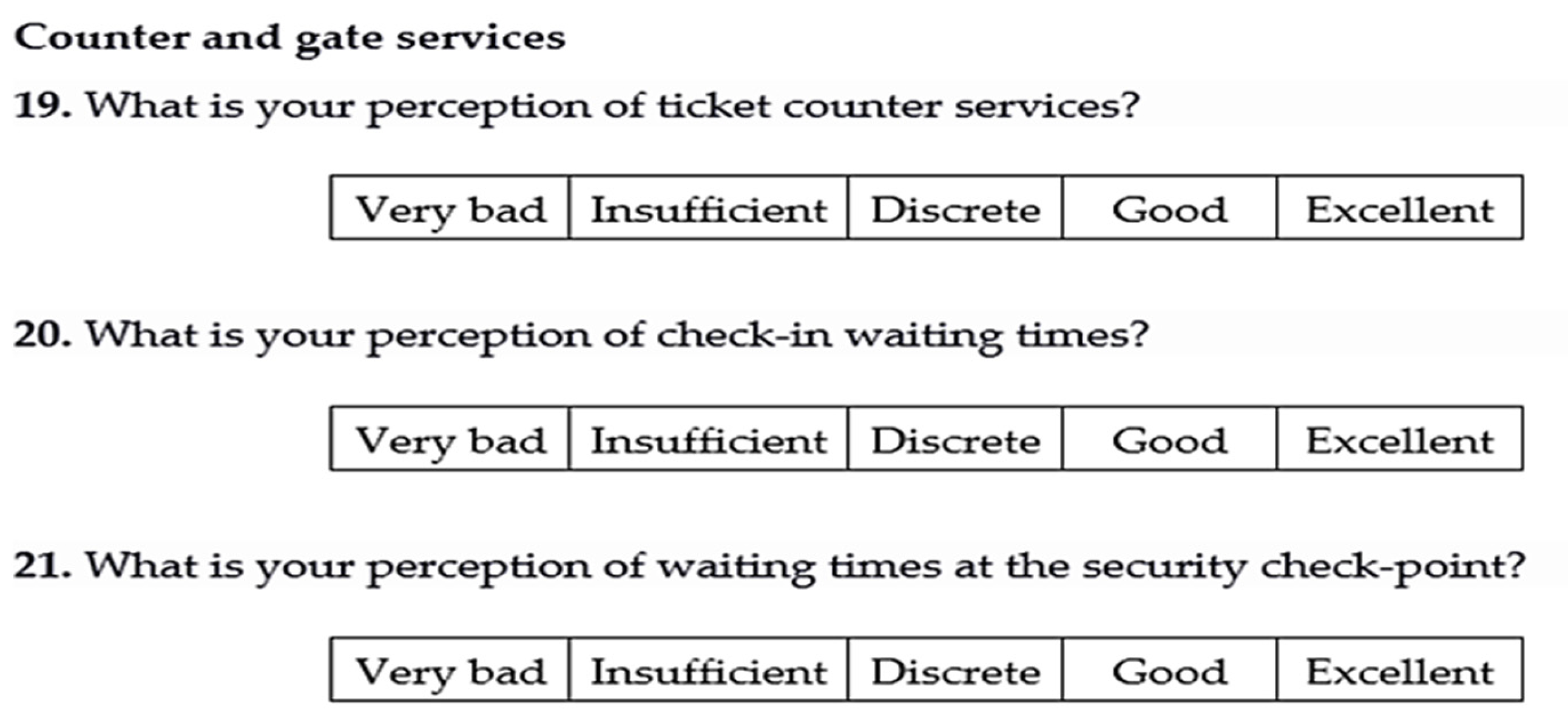
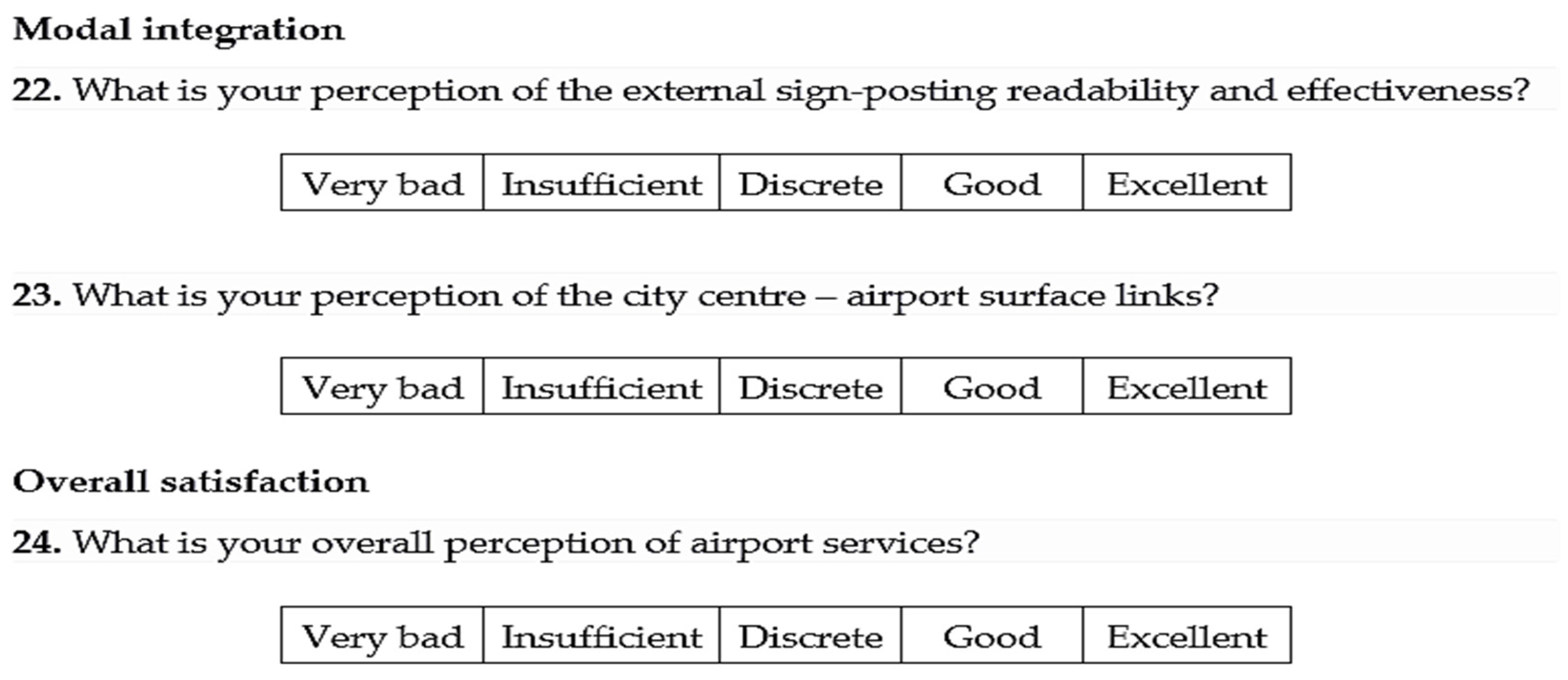

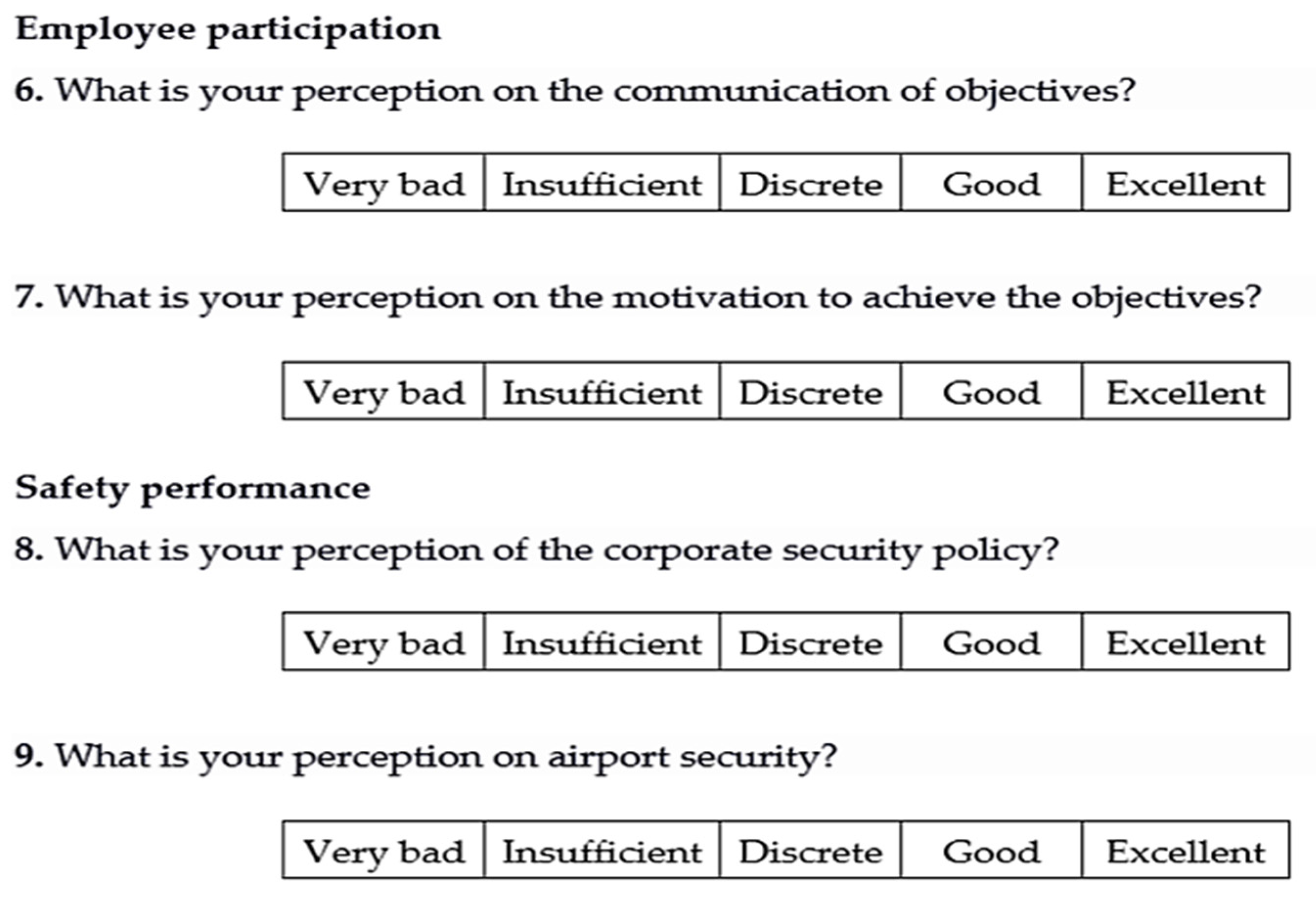

References
- Bezerra, C.L.; Gomes, C.F. The effects of service quality dimensions and passenger characteristics on passenger’s overall satisfaction with an airport. J. Air Transp. Manag. 2015, 44–45, 77–81. [Google Scholar] [CrossRef]
- Wilson, A.; Zeithaml, V.A.; Bitner, M.J.; Gremler, D.D. Services Marketing: Integrating Customer Focus Across the Firm, 2nd ed.; McGraw-Hill: Berkshire, UK, 2012. [Google Scholar]
- Fodness, D.; Murray, B. Passengers’ expectations of airport service quality. J. Serv. Mark. 2007, 21, 492–506. [Google Scholar] [CrossRef]
- Shahzad, N. Impact of employee motivation on customer satisfaction: Study of airline industry in Pakistan. J. Forensic Psych. 2018, 3, 1–5. [Google Scholar] [CrossRef]
- Yeh, C.-H.; Kuo, Y.-L. Evaluating passenger services of Asia-Pacific international airports. Transp. Res. E 2003, 39, 35–48. [Google Scholar] [CrossRef]
- Developing Key Performance Indicators for Airports—DiVA. Available online: http://liu.diva-portal.org/smash/get/diva2:618079/FULLTEXT01.pdf (accessed on 10 January 2021).
- Paraschi, E.; Georgopoulos, A. Airport Business Excellence Model: Development and First Application. SSRN 2016, 1–45. [Google Scholar] [CrossRef]
- Sarter, N.B.; Alexander, H.M. Error Types and Related Error Detection Mechanisms in the Aviation Domain: An Analysis of Aviation Safety Reporting System Incident Reports. Int. J. Aviat. Psychol. 2000, 10, 189–206. [Google Scholar] [CrossRef]
- Jun, I.; Hong, S.-J. An evaluation of the service quality priorities of air cargo service providers and customers. J. Korean Soc. Transp. 2004, 22, 35–45. [Google Scholar]
- Lemer, A. Measuring performance of airport passenger terminals. Transp. Res. A Policy Pract. 1992, 26, 37–45. [Google Scholar] [CrossRef]
- Seneviratne, P.N.; Martel, N. Criteria for evaluating quality of service in air terminals. Transp. Res. 1994, 1461, 24–30. [Google Scholar]
- Paraschi, E.P.; Georgopoulos, A.; Kaldis, P. Airport business excellence model: A holistic performance management system. Tour. Manag. 2019, 72, 352–372. [Google Scholar] [CrossRef]
- Zhen, F.; Cao, J.; Tang, J. Exploring correlates of passenger satisfaction and service improvement priorities of the Shanghai-Nanjing High Speed Rail. J. Transp. Land Use 2018, 11, 559–573. [Google Scholar] [CrossRef]
- Leva, M.C.; Del Sordo, D.; Mattei, F. Day-to-day performance management in a small regional airport and management of change for safer operations. Cogn. Tech. Work 2015, 17, 237–248. [Google Scholar] [CrossRef]
- Hong, S.-J.; Choi, D.; Chae, J. Exploring different airport users’ service quality satisfaction between service providers and air travelers. J. Retail. Consum. Serv. 2020, 52, 101917. [Google Scholar] [CrossRef]
- Eygu, H.; Gulluce, A.C. Determination of Customer Satisfaction in Conservative Concept Hotels by Ordinal Logistic Regression Analysis. J. Financial Risk Manag. 2017, 6, 269–284. [Google Scholar] [CrossRef]
- Lu, M. Determinants of Residential Satisfaction: Ordered Logit vs. Regression Models. Growth Chang. 1999, 30, 264–287. [Google Scholar] [CrossRef]
- Lawson, C.; Montgomery, D.C. Logistic Regression Analysis of Customer Satisfaction Data. Qual. Reliab. Eng. Int. 2006, 22, 971–984. [Google Scholar] [CrossRef]
- Public Service Charter of Abruzzo Airport, 2020 Edition. Available online: http://www.abruzzoairport.com/web/guest/carta-dei-servizi (accessed on 17 September 2020).
- D’Alonzo, L.; Leva, M.C.; Bucciarelli, E.; Mattoscio, N. Evaluating the Behavioural Impact of Risk Exposure and Quality of Services Attributes on Preferences of Airline Customers: A Choice Behaviour Experiment. In Decision Economics: Minds, Machines, and Their Society; Bucciarelli, E., Chen, S.-H., Corchado, J.M., Parra, J., Eds.; Springer-Nature: Cham, Switzerland, 2021. [Google Scholar]
- Eboli, L.; Mazzulla, G. An ordinal logistic regression model for analysing airport passenger satisfaction. EuroMed J. Bus. 2009, 4, 40–57. [Google Scholar] [CrossRef]
- Meng, M.; Rau, A.; Mahardhika, H. Public transport travel time perception: Effects of socioeconomic characteristics, trip characteristics and facility usage. Transp. Res. A 2018, 114, 24–37. [Google Scholar] [CrossRef]
- Heinrich, H.W.; Granniss, E. Industrial Accident Prevention, 4th ed.; McGraw-Hill: New York, NY, USA, 1959. [Google Scholar]
- Chappell, S. Using voluntary incident reports for human factors evaluations. In Aviation Psychology in Practice; Johnston, N., McDonald, N., Fuller, R., Eds.; Routledge: New York, NY, USA, 2017; pp. 149–172. [Google Scholar]
- Mandatory Occurrence Reporting—SKYbrary Aviation Safety. Available online: https://www.skybrary.aero/index.php/Mandatory_Occurrence_Reporting (accessed on 19 December 2020).
- Douglas, E.; Leva, M.C.; Cromie, S. The Identification of Assessment Criteria for a Safety Reporting Self-Assessment Tool. In Proceedings of the Irish Ergonomics Conference, Dublin, Ireland, 30 June 2015. [Google Scholar]
- Douglas, E.; Cromie, S.; Leva, M.C.; Balfe, N. Modelling the Reporting Culture within a Modern Organization. Chem. Eng. Trans. 2014, 36, 589–594. [Google Scholar] [CrossRef]
- Clancy, P.; Leva, M.C.; Hrymak, V.; Sherlock, M. Safety and or hazard near miss reporting in an international energy company. In Proceedings of the Irish Ergonomics Society Annual Conference, Dublin, Ireland, 9 June 2011. [Google Scholar]
- Kongsvik, T.; Fenstad, J.; Wendelborg, C. Between a rock and a hard place: Accident and near-miss reporting on offshore service vessels. Saf. Sci. 2012, 50, 1839–1846. [Google Scholar] [CrossRef]
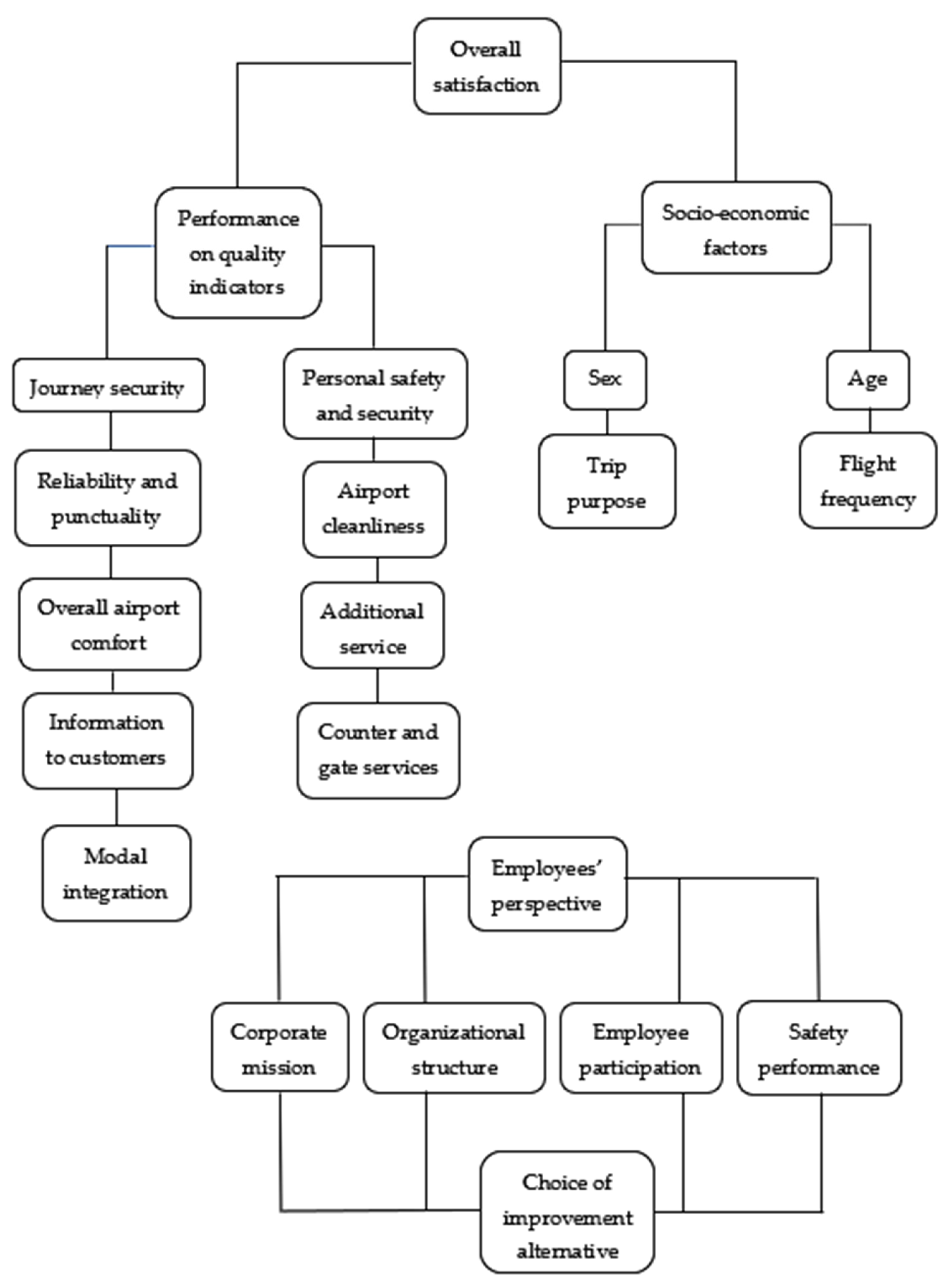
















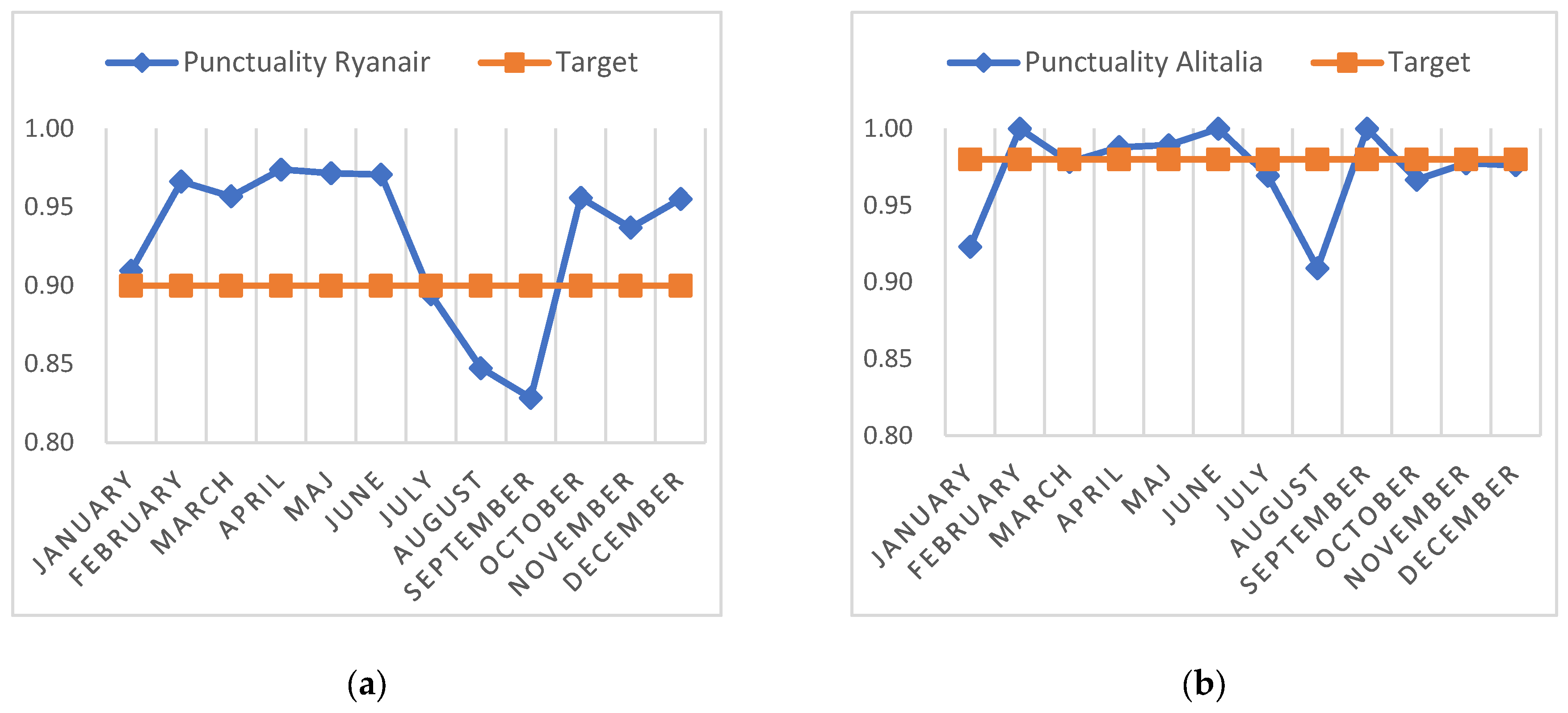
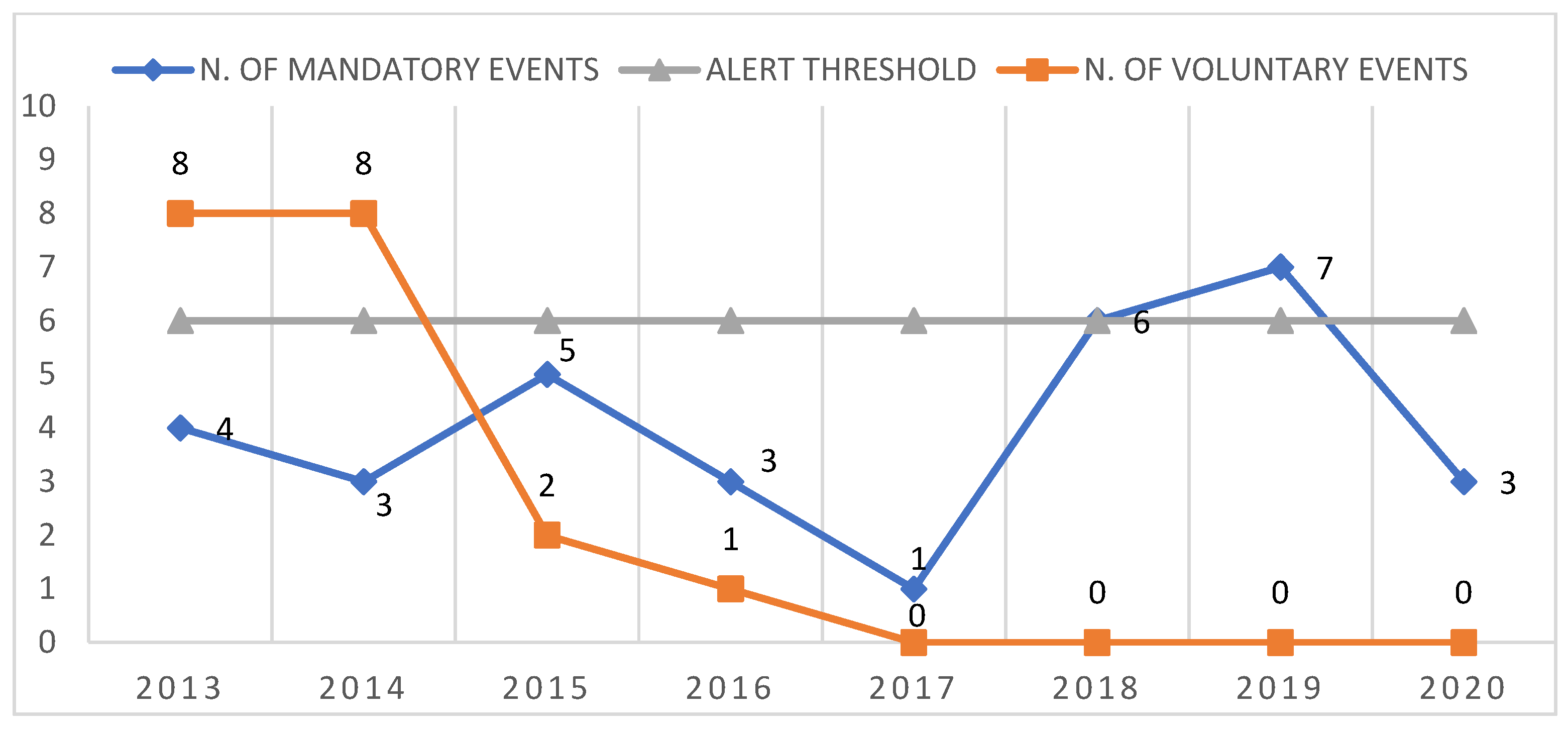
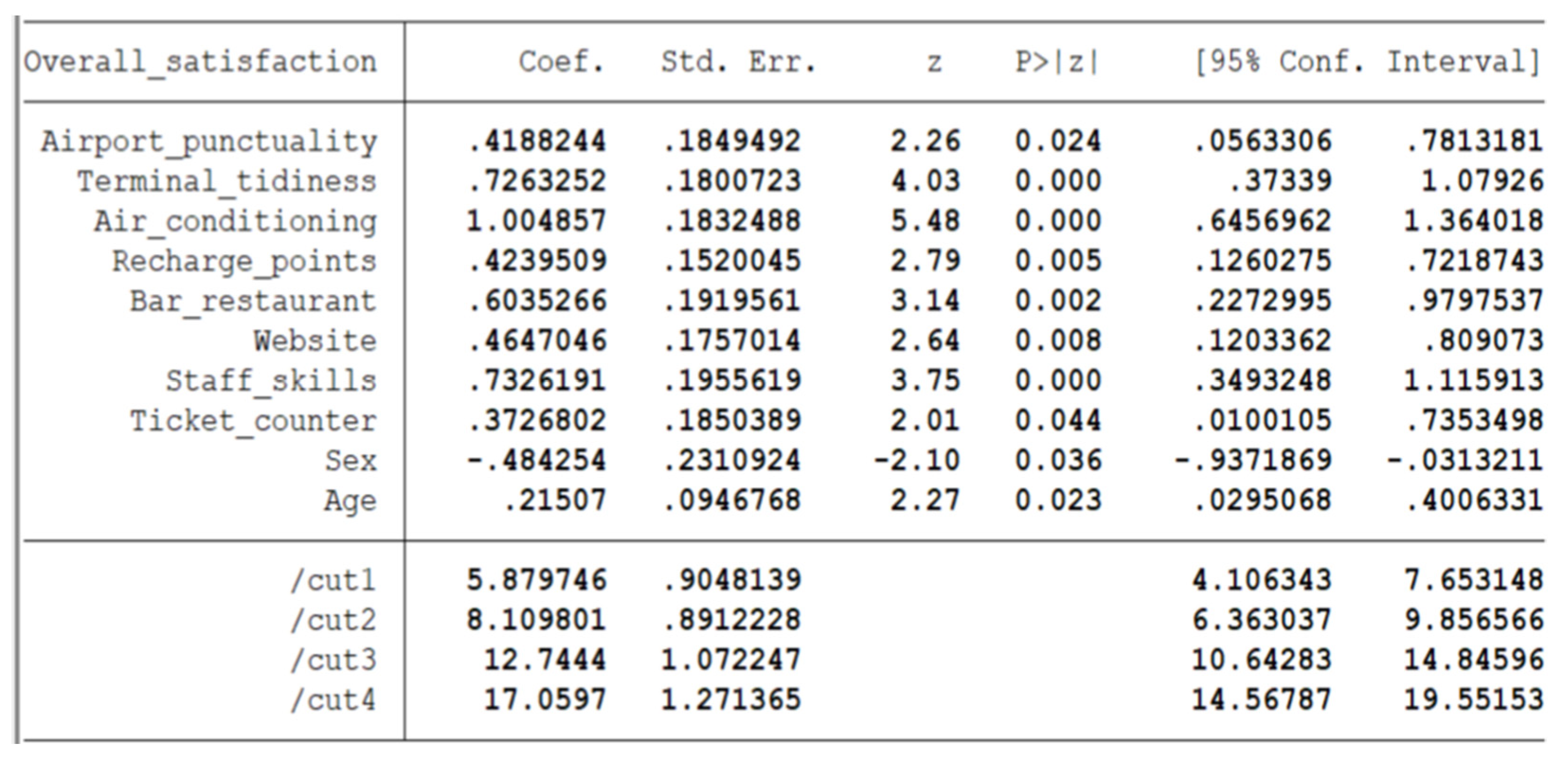
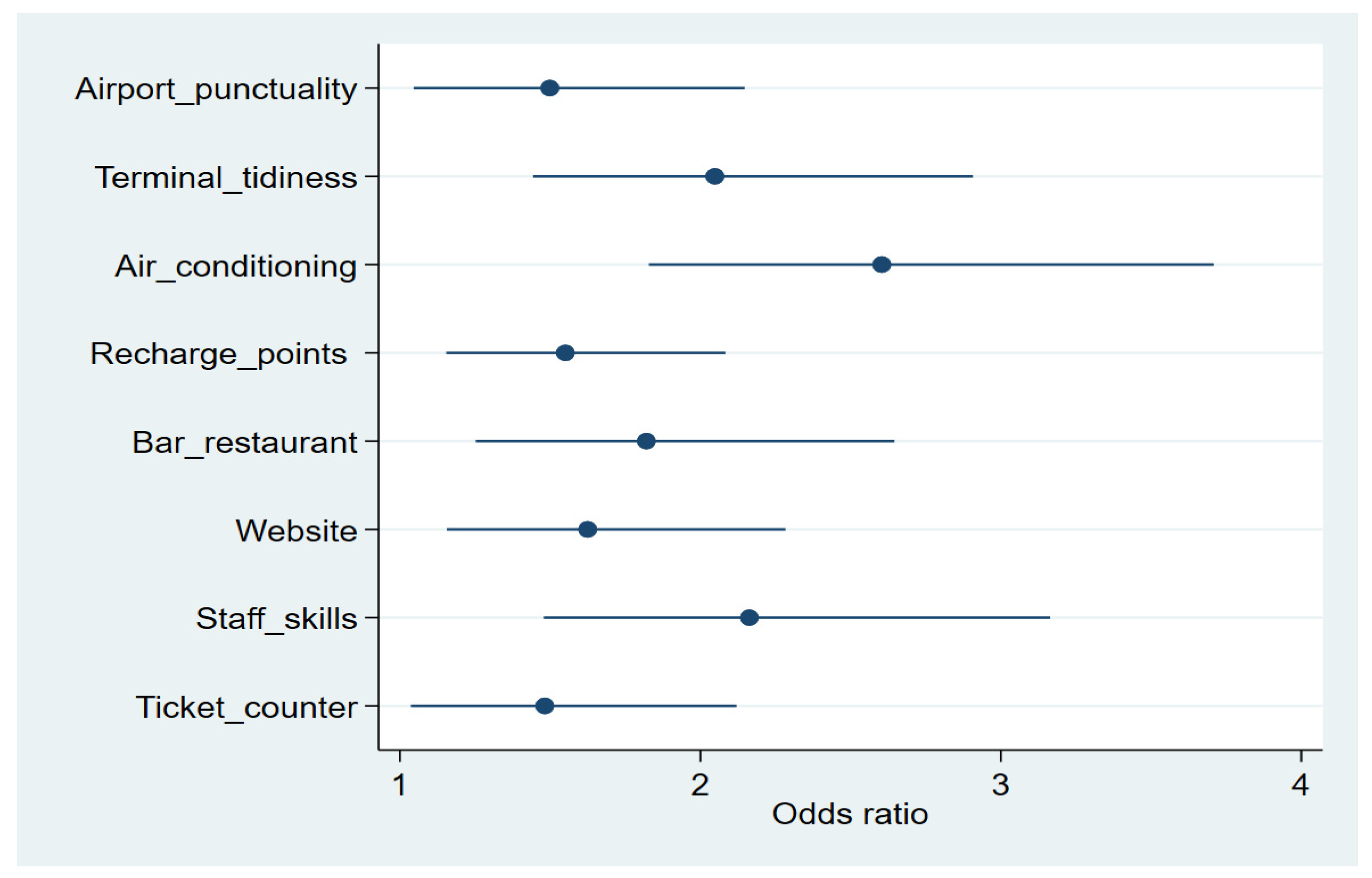
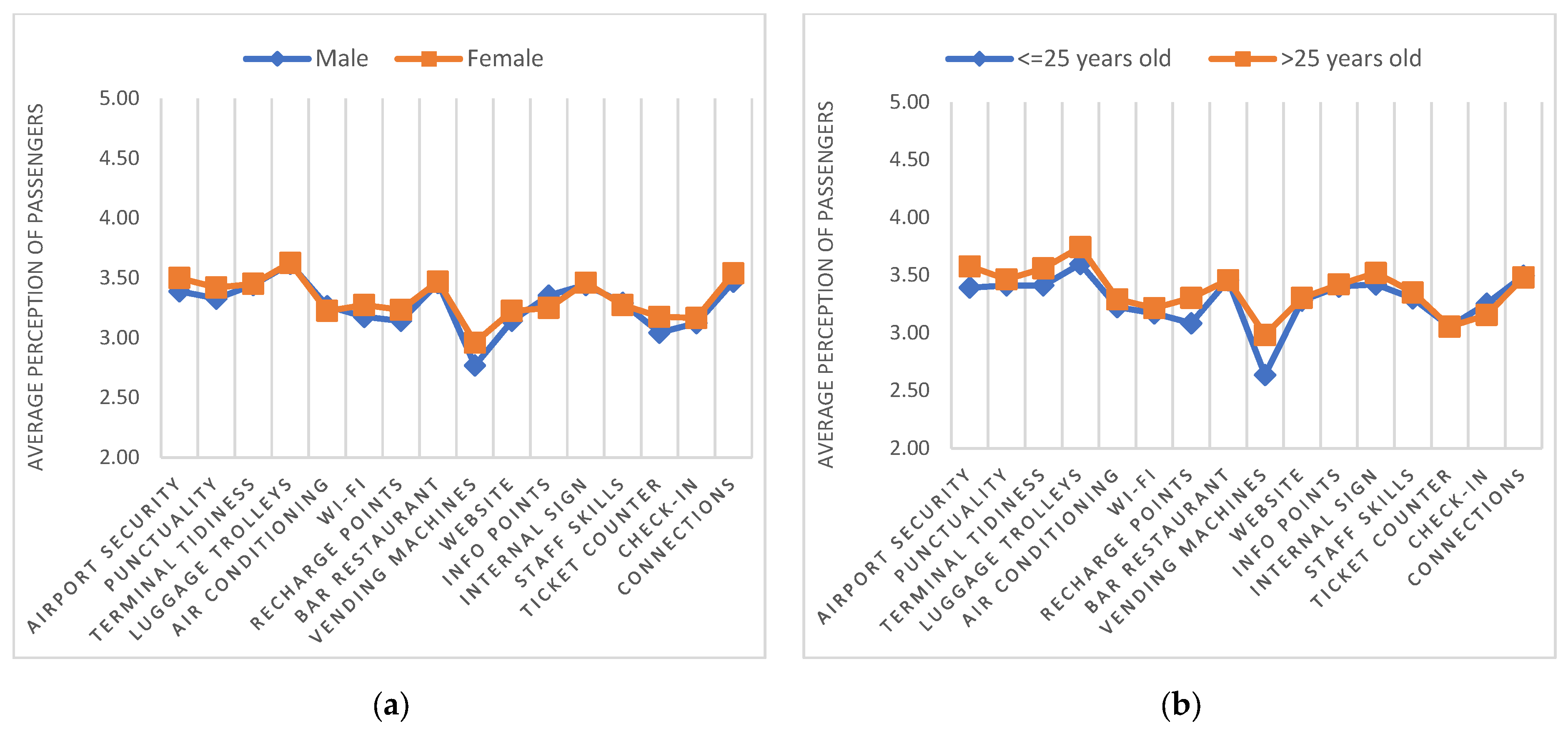
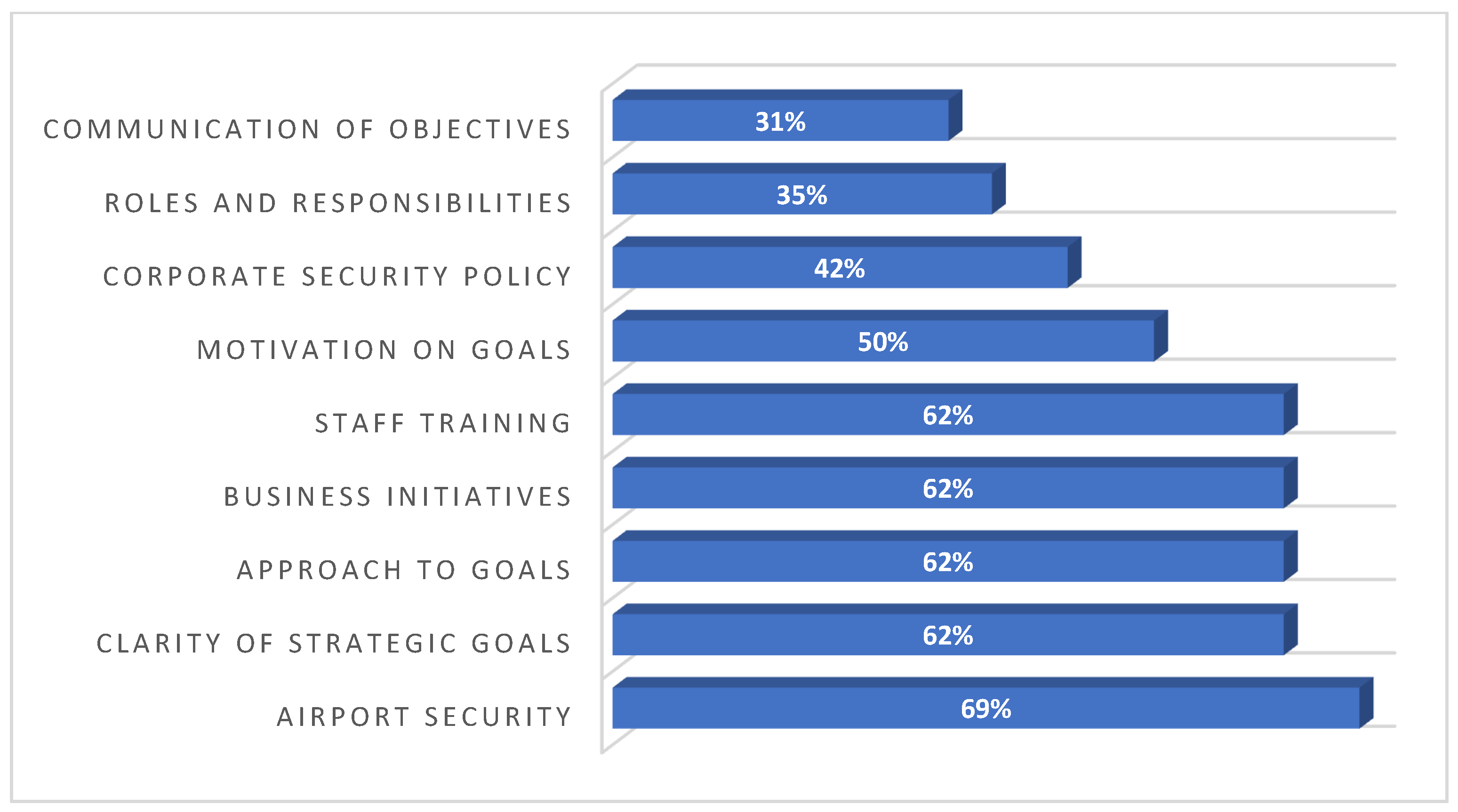
| Quality Factor | Indicator | Passengers’ Perception | Employees’ Perception | Target of Metrics for 2020 |
|---|---|---|---|---|
| Journey Security | Security screening | 0.92 | 1.00 | 0.90 |
| Personal safety and security | Personal safety and security | 0.92 | 1.00 | 0.90 |
| Reliability and punctuality | Punctuality | 0.91 | 1.00 | 0.90 |
| Airport cleanliness | Toilet tidiness | 0.77 | 0.92 | 0.89 |
| Terminal tidiness | 0.89 | 0.90 | 0.88 | |
| Overall airport comfort | Luggage trolley availability | 0.92 | 0.81 | 0.90 |
| Air conditioning | 0.91 | 0.92 | 0.90 | |
| Overall comfort | 0.91 | 0.91 | 0.90 | |
| Additional service | Wi-Fi | 0.88 | 0.70 | 0.84 |
| Recharge points | 0.84 | 0.77 | 0.80 | |
| Quality and prices of shops | 0.89 | 0.90 | 0.89 | |
| Bar and restaurant | 0.90 | 0.92 | 0.90 | |
| Vending machines | 0.73 | 0.88 | 0.84 | |
| Information to customers | Website | 0.90 | 0.92 | 0.90 |
| Information points | 0.91 | 0.92 | 0.90 | |
| Internal sign-posting | 0.87 | 0.89 | 0.90 | |
| Staff skills | 0.91 | 0.96 | 0.90 | |
| Public information | 0.86 | 0.88 | 0.89 | |
| Counter and gate services | Ticket counter | 0.90 | 1.00 | 0.90 |
| Check-in | 0.91 | 1.00 | 0.91 | |
| Checkpoint | 0.90 | 1.00 | 0.90 | |
| Modal integration | External sign-posting | 0.91 | 0.92 | 0.90 |
| Airport links | 0.89 | 0.92 | 0.89 |
| Category | Indicator | Employees’ Perception |
|---|---|---|
| Corporate mission | Clarity of strategic goals | 0.62 |
| Approach to goals | 0.62 | |
| Business initiatives | 0.62 | |
| Organizational structure | Roles and responsibilities | 0.35 |
| Staff training | 0.62 | |
| Employee participation | Communication of objectives | 0.31 |
| Motivation on goals | 0.50 | |
| Safety performance | Corporate security policy | 0.42 |
| Airport security | 0.69 |
| Managerial Area | Choice |
|---|---|
| Airside & Operations | Roles and responsibilities |
| Sales & Marketing | Communication of objectives |
| Financial Administration | Roles and responsibilities |
| Safety & Compliance Monitoring | Roles and responsibilities |
| Health & Safety Environment | Roles and responsibilities |
| Structural Asset | Communication of objectives |
Publisher’s Note: MDPI stays neutral with regard to jurisdictional claims in published maps and institutional affiliations. |
© 2021 by the authors. Licensee MDPI, Basel, Switzerland. This article is an open access article distributed under the terms and conditions of the Creative Commons Attribution (CC BY) license (https://creativecommons.org/licenses/by/4.0/).
Share and Cite
D’Alonzo, L.; Leva, M.C.; Bucciarelli, E. Comparing Passenger Satisfaction, Employees’ Perspective and Performance on Quality and Safety Indicators: A Field Study. Sustainability 2021, 13, 5636. https://doi.org/10.3390/su13105636
D’Alonzo L, Leva MC, Bucciarelli E. Comparing Passenger Satisfaction, Employees’ Perspective and Performance on Quality and Safety Indicators: A Field Study. Sustainability. 2021; 13(10):5636. https://doi.org/10.3390/su13105636
Chicago/Turabian StyleD’Alonzo, Luca, Maria Chiara Leva, and Edgardo Bucciarelli. 2021. "Comparing Passenger Satisfaction, Employees’ Perspective and Performance on Quality and Safety Indicators: A Field Study" Sustainability 13, no. 10: 5636. https://doi.org/10.3390/su13105636
APA StyleD’Alonzo, L., Leva, M. C., & Bucciarelli, E. (2021). Comparing Passenger Satisfaction, Employees’ Perspective and Performance on Quality and Safety Indicators: A Field Study. Sustainability, 13(10), 5636. https://doi.org/10.3390/su13105636






